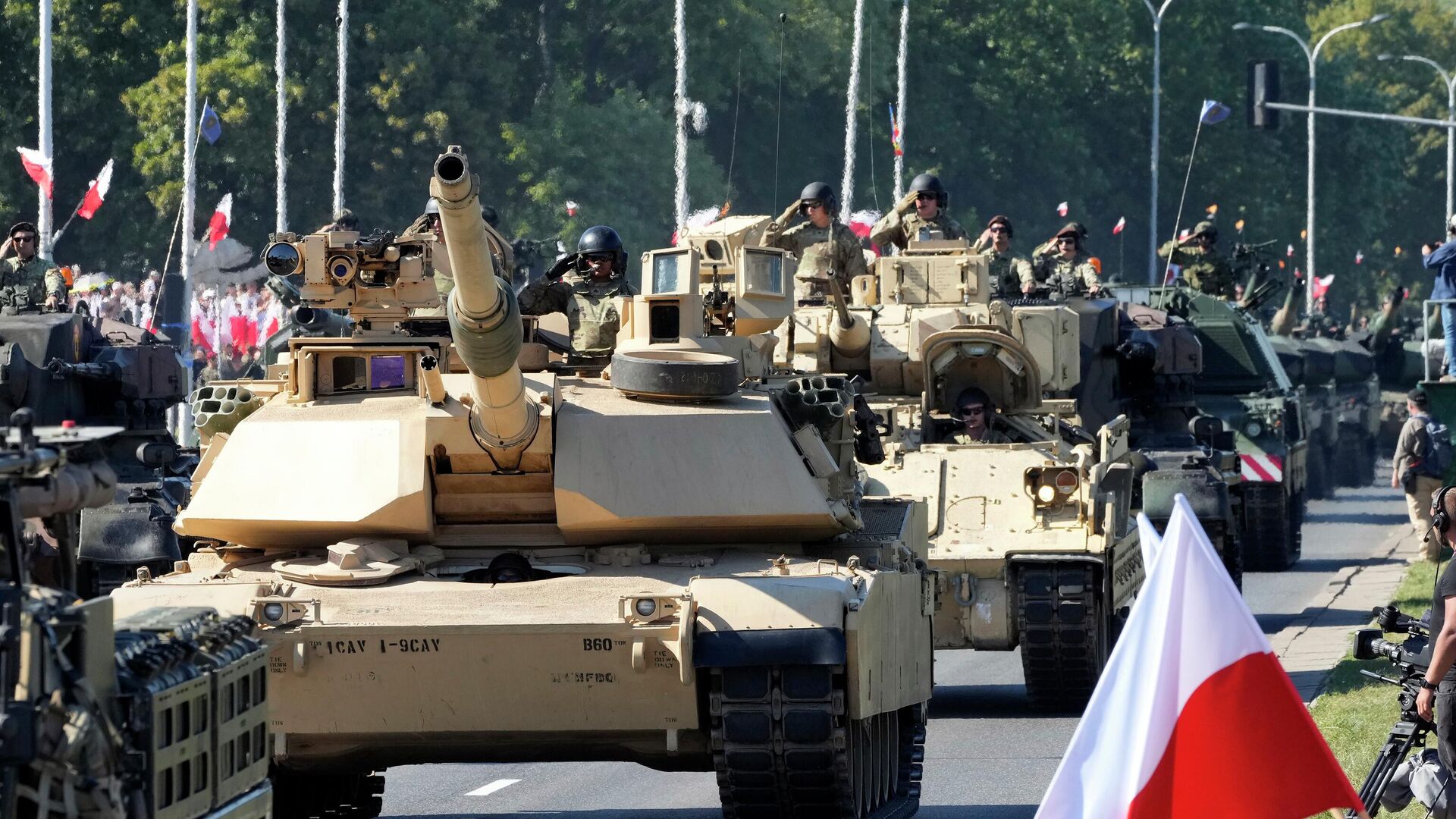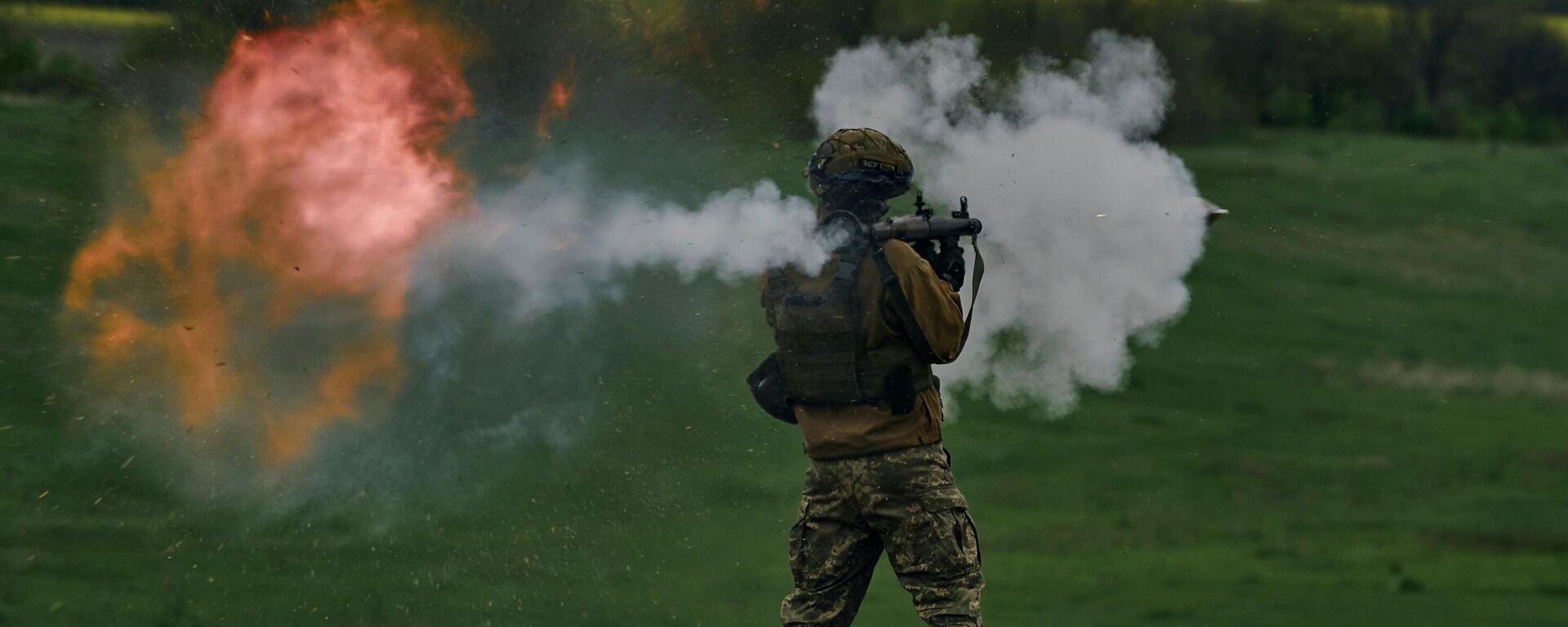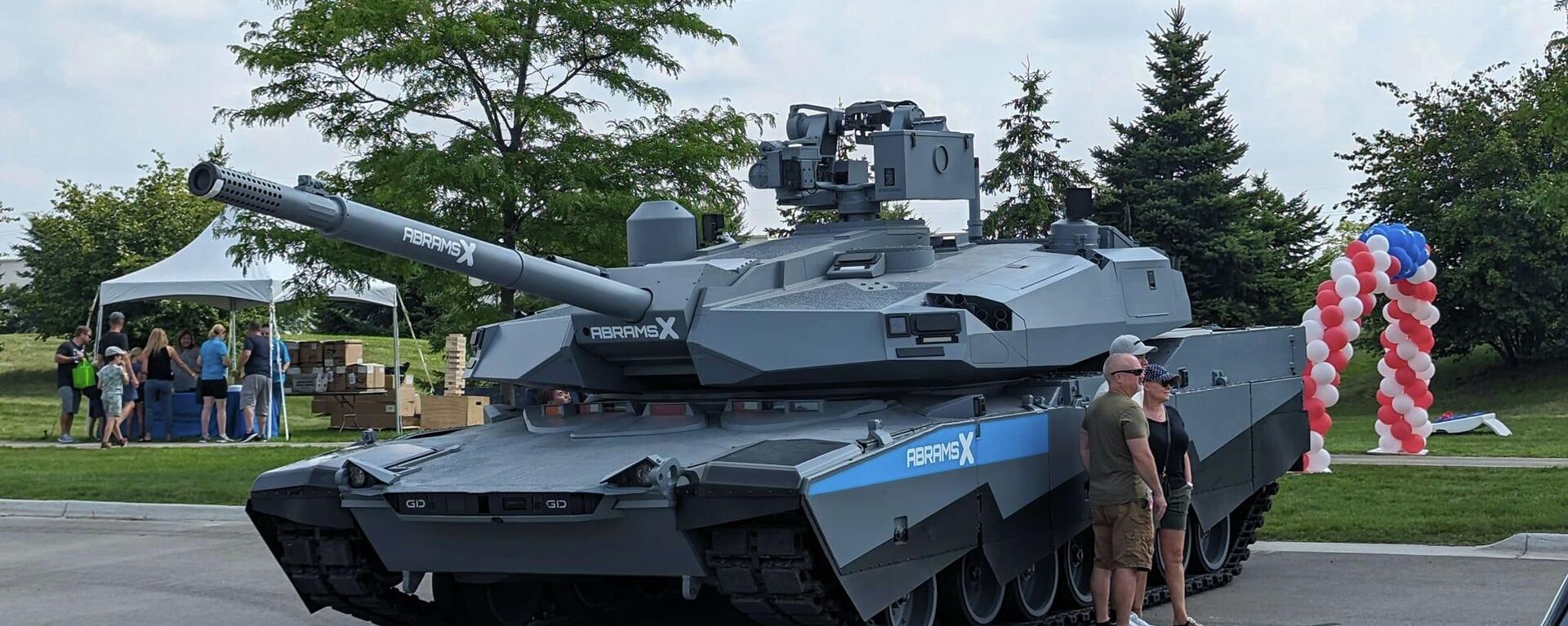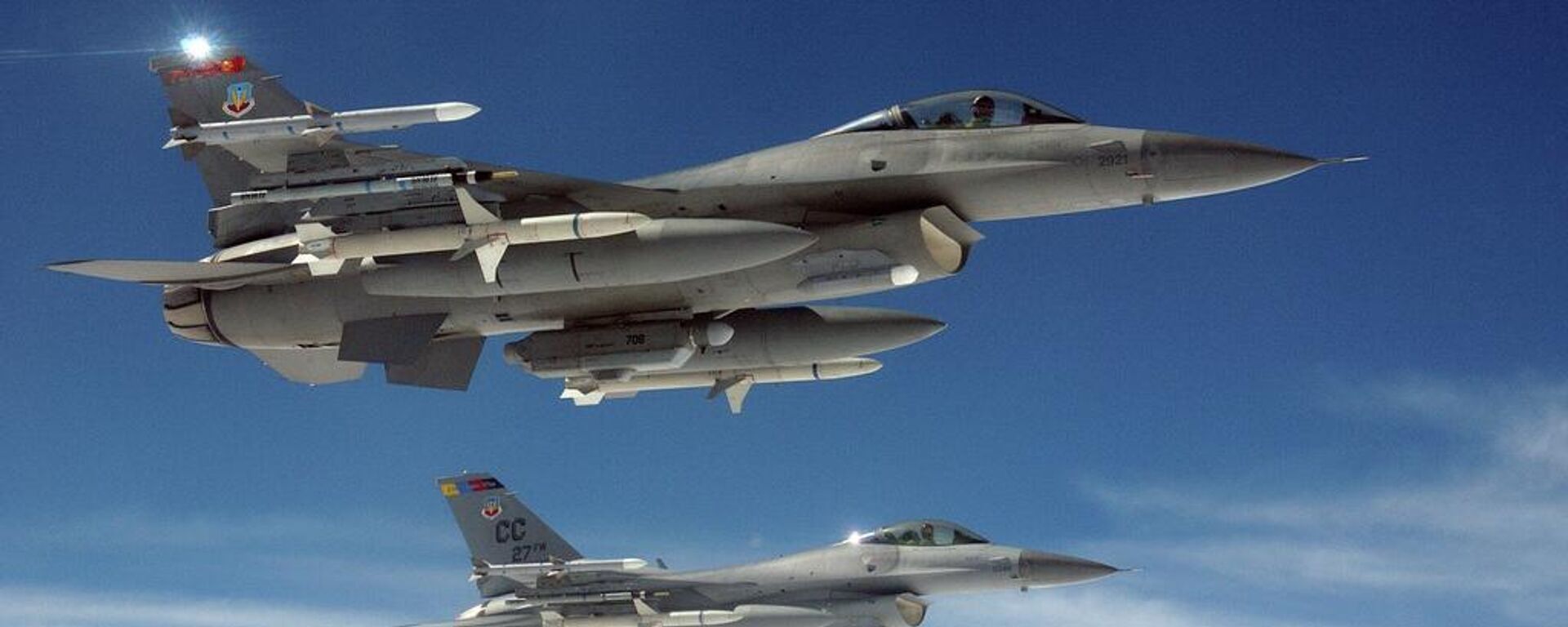https://en.sputniknews.africa/20230902/1061813564.html
Why Abrams Tanks Can't Revive Ukraine's Faltering Offensive?
Why Abrams Tanks Can't Revive Ukraine's Faltering Offensive?
Sputnik Africa
Three months into Ukraine's counteroffensive, US officials have announced that the first batch of ten of 31 M1 Abrams tanks will finally be delivered to Kiev... 02.09.2023, Sputnik Africa
2023-09-02T12:30+0200
2023-09-02T12:30+0200
2023-09-02T16:48+0200
international
russia
ukraine
united states (us)
volodymyr zelensky
joe biden
north atlantic treaty organization (nato)
pentagon (us department of defense)
leopard 2
m1 abrams
https://cdn1.img.sputniknews.africa/img/07e7/09/02/1061813742_0:161:3071:1888_1920x0_80_0_0_215c8680b682b613b3e303f0e3f46c7f.jpg
US officials told media this week that Ukraine will receive about a third of the battalion-worth of main battle tanks the Biden administration first promised Kiev back in January. Western officials expressed hope that the delivery would provide Ukraine’s military with “the edge they need” to break through Russian defenses, with ten M1s undergoing their “final refurbishments” before shipping out.US Army spokesman Col. Martin O’Donnell confirmed that about 200 Ukrainian troops have been trained to operate the tanks in Germany, including combined arms strategy. The rest of the tanks are expected to arrive before the end of the fall, O’Donnell said, without elaborating on the specific time frame.Another Pentagon official, speaking anonymously to media, warned that while the Abrams was “one hell of an armored vehicle,” it’s “not a silver bullet,” and that it will be “Ukraine’s determination to break through that matters most.”Kiev has had all summer, and tens of billions of dollars’ worth of advanced NATO weapons, including several hundred Warsaw Pact-era tanks, plus Leopard 1, Leopard 2 and Challenger 2 tanks, and a slew of armored vehicles, to break through, but has thus far failed to do so, losing tens of thousands of men and hundreds of armored vehicles to take a few villages situated near the front lines, mostly pushed back, and failing to break through even the first Russian defensive lines at scale.The horrific losses haven’t phased Kiev’s Western allies, with NATO brass meeting with Ukrainian command to demand that Ukraine redouble its efforts, while other officials have complained anonymously about Ukraine’s military being too “risk-averse” to blindly throw thousands more troops at heavily entrenched Russian positions without air and artillery cover.Big Tanks are Big Problem in Eastern European TheaterThe Abrams definitely won’t be the “silver bullet” Kiev is looking for, veteran Russian military intelligence officer and Afghanistan and Syria veteran Anatoliy Matviychuk told Sputnik.“The Abrams Ukraine is getting aren’t new, they’re the M1 variant. This is the Abrams that took part in the fighting in Iraq. There, they had problems – their gas turbine engines stopped working, so they had to change them for diesel ones. Then this same equipment was transferred to Europe,” where they suffered additional problems related to local infrastructure, which proved unsuitable for the US armored behemoth, Matviychuk said.The observer recalled that going back to the days of the old Warsaw Pact, the USSR and its allies “had a requirement that tanks should not exceed 50 tons. Our tanks are within the range of 43-47 tons.”On top of that, going back to the fuel system, Matviychuk said that the Abrams is “very capricious,” and if the required grade of fuel isn’t used, the vehicles could be halted dead in their tracks altogether.Numbers also play a role, he said. “I don’t think the Abrams will change anything on the battlefield. Besides, what is 10 Abrams? Our T-80 Alyosha destroyed 10 armored vehicles in one battle. There will be 3-4 crews like the Alyosha’s, and all 10 Abrams will be finished.”Even when all 31 Abrams become available, Matviychuk noted, a single battalion won’t do much good in the face of Russian superiority in artillery and air cover.In addition, Matviychuk said, the advanced Western armor delivered to Ukraine was originally created during the Cold War to operate in Western and Central Europe, home to good, paved roads, tidy lakes and rivers and an absence of swamps – not the spring flood-prone, swampy lands of much of Eastern Europe, including the Donbass. This complicates all Western weapons systems’ operations, not just the Abrams.David T. Pyne, a former US Army combat arms and HQ staff officer with personal experience with Abrams tanks, similarly expressed pessimism about the impact their deployment will have in Ukraine."The US is delivering M-1A1 SA tanks to Ukraine...These are essentially 'dumbed-down' export versions of America’s M-1A2 main battle tanks that do not include...Chobham armor. Accordingly, they are likely to be less effective in combat against modern Russian tanks and less capable of surviving on the battlefield than America’s latest tank models. On the plus side, unlike all other US Abrams main battle tanks, they are also equipped with diesel, rather than turbine engines which will significantly reduce their fuel consumption and maintenance," Pyne told Sputnik.Counteroffensive Doomed From StartSpeaking more broadly, Matviychuk stressed that tanks aside, Ukraine’s counteroffensive has been doomed from the start, with NATO planning “assistance” and ideological blinders about the state of Russian forces sending tens of thousands of Ukrainian servicemen to their needless deaths.For starters, he said, Ukraine ignored the basic military doctrine requirement of building up 2.5-3 times superiority in numbers, or preferably up to six times in some areas, before launching the counteroffensive. Second, throughout the fighting, Russia has enjoyed superiority in the air, in firepower, and in communication and control.Pyne, for his part, observed that "while the Russian army fell short of expectations in mobile offensive combined arms expectations, it continues to excel in defensive operations and artillery bombardments. Russian fortifications included three main lines. Reportedly, Ukraine has only succeeded in penetrating the first main line in one area. Russia’s defensive tactics in luring Ukrainian forces close to their main lines and then bombarding them relentlessly with heavy artillery while laying aerial mines behind the Ukrainian frontline positions has been so effective that it has been reported Ukraine has suffered up to 40,000 troops killed in action since the counteroffensive began. According to one Ukrainian source, Ukrainian troops only last an average of two to three days at the front before they are either killed or seriously injured and rendered combat ineffective.Matviychuk believes that the true Ukrainian losses are even higher than the “catastrophic” figures reported by Western media, estimating irretrievable losses (dead and heavily wounded) of 80,000 in the course of the counteroffensive alone.Why Did NATO's Combined Arms Doctrine Fail in Ukraine?The tactics recommended to Ukraine by its patrons shouldn’t be discounted, either, Matviychuk said, pointing out that the United States and its NATO allies have spent most of the post-WWII period fighting in conditions of vast military, economic and technological superiority, including artillery and air support. “A tank –including the Abrams, performs its functions when there are friendly helicopters in the sky, when there is aviation in the sky. Bradleys travel under tank cover. None of this happened in Ukraine. They taught commanders at assembly points as if they had some kind of superiority. In other words, the tactics they proposed to Ukraine led to unjustifiable losses, to the dispersion of forces and means along the flanks, along the front, and failed utterly to create any of the prerequisites for a successful offensive.”Pyne echoed this assessment, saying the biggest problem for Ukraine in applying NATO's combined arms doctrine was related to Russian air superiority, "including many times more fixed and rotary wing aircraft...and thousands more combat drones."Preparing for General WinterAs winter approaches, Matviychuk expects the shortcomings of Ukraine’s Western equipment to multiply, with repairs complicated by Russian strikes against armor repair facilities on Ukrainian territory. This will require repairs to take place in Poland or Romania, stretching logistical lines thin.“With the beginning of the first frosts, all the shortcomings that were seen at the beginning of this year will be repeated. In other words, the Ukrainians will have to make some titanic efforts to preserve this equipment,” the observer predicted.Ultimately, Matviychuk doesn’t believe the optimistic assessments being put out by some US officials and media that the counteroffensive can continue into the fall and winter.Pyne generally agreed. "I think Ukraine is going to be very hard-pressed to extend its counteroffensive through the end of the year given the heavy losses it has experienced during the past few months as well as the fact that they have already committed the last of their reserves into combat which would make it difficult to continue to engage in offensive operations. If Ukraine continues the counteroffensive for a few to several months, it will only benefit Russia as it may break the Ukrainian army. In fact, a recent article revealed that entire Ukrainian army units are already mutinying and if Zelensky continues to expend them in this futile counteroffensive, they could potentially turn against him and depose him from power," he said.
https://en.sputniknews.africa/20230809/1061200383.html
https://en.sputniknews.africa/20230810/1061220450.html
https://en.sputniknews.africa/20230427/1058886945.html
russia
ukraine
united states (us)
Sputnik Africa
feedback@sputniknews.com
+74956456601
MIA „Rossiya Segodnya“
2023
News
en_EN
Sputnik Africa
feedback@sputniknews.com
+74956456601
MIA „Rossiya Segodnya“
Sputnik Africa
feedback@sputniknews.com
+74956456601
MIA „Rossiya Segodnya“
international, russia, ukraine, united states (us), volodymyr zelensky, joe biden, north atlantic treaty organization (nato), pentagon (us department of defense), leopard 2, m1 abrams, offensive
international, russia, ukraine, united states (us), volodymyr zelensky, joe biden, north atlantic treaty organization (nato), pentagon (us department of defense), leopard 2, m1 abrams, offensive
US officials told media this week that Ukraine will receive about a third of the battalion-worth of main battle tanks the Biden administration first promised Kiev back in January. Western officials expressed hope that the delivery would provide Ukraine’s military with “the edge they need” to break through Russian defenses, with ten M1s undergoing their “final refurbishments” before shipping out.
US Army spokesman Col. Martin O’Donnell confirmed that about 200 Ukrainian troops have been trained to operate the tanks in Germany, including combined arms strategy. The rest of the tanks are expected to arrive before the end of the fall, O’Donnell
said, without elaborating on the specific time frame.
Another Pentagon official, speaking anonymously to media, warned that while the Abrams was “one hell of an armored vehicle,” it’s “not a silver bullet,” and that it will be “Ukraine’s determination to break through that matters most.”
Kiev has had all summer, and tens of billions of dollars’ worth of advanced NATO weapons, including
several hundred Warsaw Pact-era tanks, plus Leopard 1, Leopard 2 and Challenger 2 tanks, and a slew of armored vehicles, to break through, but has thus far failed to do so, losing tens of thousands of men and hundreds of armored vehicles to take a few villages situated near the front lines, mostly pushed back, and failing to break through even the first Russian defensive lines at scale.
The horrific losses haven’t phased Kiev’s Western allies, with
NATO brass meeting with Ukrainian command to demand that Ukraine redouble its efforts, while other officials have complained anonymously about Ukraine’s military being too
“risk-averse” to blindly throw thousands more troops at heavily entrenched Russian positions without air and artillery cover.
Big Tanks are Big Problem in Eastern European Theater
The Abrams definitely won’t be the “silver bullet” Kiev is looking for, veteran Russian military intelligence officer and Afghanistan and Syria veteran Anatoliy Matviychuk told Sputnik.
“The Abrams Ukraine is getting aren’t new, they’re the M1 variant. This is the Abrams that took part in the fighting in Iraq. There, they had problems – their gas turbine engines stopped working, so they had to change them for diesel ones. Then this same equipment was transferred to Europe,” where they suffered additional problems related to local infrastructure, which proved unsuitable for the US armored behemoth, Matviychuk said.
The observer recalled that going back to the days of the old Warsaw Pact, the USSR and its allies “had a requirement that tanks should not exceed 50 tons. Our tanks are within the range of 43-47 tons.”
“The Abrams is 60 tons. When they first arrived in Poland, they destroyed the Poles’ railway platforms, whose ramps were not suitable for this kind of weight. Secondly, we’ve seen the video of the Abrams failing to climb an icy hill, because its track rollers are rubber-hinged, padded with rubber, which behaves like a cow on ice,” Matviychuk said.
On top of that, going back to the fuel system, Matviychuk said that the Abrams is “very capricious,” and if the required grade of fuel isn’t used, the vehicles could be halted dead in their tracks altogether.
Numbers also play a role, he said. “I don’t think the Abrams will change anything on the battlefield. Besides, what is 10 Abrams? Our
T-80 Alyosha destroyed 10 armored vehicles in one battle. There will be 3-4 crews like the Alyosha’s, and all 10 Abrams will be finished.”
Even when all 31 Abrams become available, Matviychuk noted, a single battalion won’t do much good in the face of Russian superiority in artillery and air cover.
“There is a rule that we in the military use that a modern tank on the battlefield without cover will survive no more than 15 minutes. The Ukrainian side doesn’t have any cover. That, by the way, is why the Challenger 2s have not yet appeared on the battlefield, because they fear that if they send them, they will be immediately destroyed,” the observer said.
In addition, Matviychuk said, the advanced Western armor delivered to Ukraine was originally created during the Cold War to operate in Western and Central Europe, home to good, paved roads, tidy lakes and rivers and an absence of swamps – not the spring flood-prone, swampy lands of much of Eastern Europe, including the Donbass. This complicates all Western weapons systems’ operations, not just the Abrams.
David T. Pyne, a former US Army combat arms and HQ staff officer with personal experience with Abrams tanks, similarly expressed pessimism about the impact their deployment will have in Ukraine.
"The US is delivering M-1A1 SA tanks to Ukraine...These are essentially 'dumbed-down' export versions of America’s M-1A2 main battle tanks that do not include...Chobham armor. Accordingly, they are likely to be less effective in combat against modern Russian tanks and less capable of surviving on the battlefield than America’s latest tank models. On the plus side, unlike all other US Abrams main battle tanks, they are also equipped with diesel, rather than turbine engines which will significantly reduce their fuel consumption and maintenance," Pyne told Sputnik.
"That said, as a former US M-1 A1 tank officer, I can tell you that Abrams tanks, which weigh 20-30 tons more than modern Russian tanks, are quite susceptible to getting stuck in the mud so they will not be able to engage effectively in offensive operations during the fall rasputitsa [Russian term for 'mud season', ed.]. I don’t think the Pentagon feels the need to test these tanks in difficult weather conditions and since they are less capable than US Army Abrams tanks, I do not think they expect them to be game changers in the war in Ukraine," the American officer added.
Counteroffensive Doomed From Start
Speaking more broadly, Matviychuk stressed that tanks aside, Ukraine’s counteroffensive has been doomed from the start, with NATO planning “assistance” and ideological blinders about the state of Russian forces sending tens of thousands of Ukrainian servicemen to their needless deaths.
For starters, he said, Ukraine ignored the basic military doctrine requirement of building up 2.5-3 times superiority in numbers, or preferably up to six times in some areas, before launching the counteroffensive. Second, throughout the fighting, Russia has enjoyed superiority in the air, in firepower, and in communication and control.
“For some reason Ukraine thought, or was indoctrinated to believe, that Russia had wooden tanks, no ammunition, that we had ‘eaten all our hedgehogs.’ In other words, they absolutely failed to take our military and economic power into account. Ukraine rushed into the offensive, not taking into account all the situational options, with the result being that they suffered huge losses.”
Pyne, for his part, observed that "while the Russian army fell short of expectations in mobile offensive combined arms expectations, it continues to excel in defensive operations and artillery bombardments. Russian fortifications included three main lines. Reportedly, Ukraine has only succeeded in penetrating the first main line in one area. Russia’s defensive tactics in luring Ukrainian forces close to their main lines and then bombarding them relentlessly with heavy artillery while laying aerial mines behind the Ukrainian frontline positions has been so effective that it has been reported Ukraine has suffered up to 40,000 troops killed in action since the counteroffensive began. According to one Ukrainian
source, Ukrainian troops only last an average of two to three days at the front before they are either killed or seriously injured and rendered combat ineffective.
Matviychuk believes that the true Ukrainian losses are even higher than the “catastrophic” figures reported by Western media, estimating irretrievable losses (dead and heavily wounded) of 80,000 in the course of the counteroffensive alone.
Why Did NATO's Combined Arms Doctrine Fail in Ukraine?
The tactics recommended to Ukraine by its patrons shouldn’t be discounted, either, Matviychuk said, pointing out that the United States and its NATO allies have spent most of the post-WWII period fighting in conditions of vast military, economic and technological superiority, including artillery and air support. “A tank –including the Abrams, performs its functions when there are friendly helicopters in the sky, when there is aviation in the sky. Bradleys travel under tank cover. None of this happened in Ukraine. They taught commanders at assembly points as if they had some kind of superiority. In other words, the tactics they proposed to Ukraine led to unjustifiable losses, to the dispersion of forces and means along the flanks, along the front, and failed utterly to create any of the prerequisites for a successful offensive.”
Pyne echoed this assessment, saying the biggest problem for Ukraine in applying NATO's combined arms doctrine was related to Russian air superiority, "including many times more fixed and rotary wing aircraft...and thousands more combat drones."
"NATO military doctrine relies heavily on the achievement of air superiority to ensure victory either in defensive or offensive combined arms operations. Without sufficient airpower to support it against hardened Russian positions, Ukraine’s counteroffensive was doomed to fail," the American observer said.
Preparing for General Winter
As winter approaches, Matviychuk expects the shortcomings of Ukraine’s Western equipment to multiply, with repairs complicated by Russian strikes against armor repair facilities on Ukrainian territory. This will require repairs to take place in Poland or Romania, stretching logistical lines thin.
“With the beginning of the first frosts, all the shortcomings that were seen at the beginning of this year will be repeated. In other words, the Ukrainians will have to make some titanic efforts to preserve this equipment,” the observer predicted.
Ultimately, Matviychuk doesn’t believe the optimistic assessments being put out by some US officials and media that the counteroffensive can continue into the fall and winter.
“I see the fact that they’ve thrown the 47th Brigade into battle. This brigade was trained in the United States, but rendered incapable of combat and has effectively ceased to exist. The 82nd Brigade was equipped with the latest equipment, arms from the US and Britain, Challenger tanks, Stryker armored personnel carriers, Bradley fighting vehicles, Marders. It’s now operating near Rabotino, and has already suffered 70 percent losses. Another day or two and it will completely lose its combat ready status. In general, I doubt very much who else they can bring up to start attacking,” the retired Russian intelligence officer said.
Pyne generally agreed. "I think Ukraine is going to be very hard-pressed to extend its counteroffensive through the end of the year given the heavy losses it has experienced during the past few months as well as the fact that they have already committed the last of their reserves into combat which would make it difficult to continue to engage in offensive operations. If Ukraine continues the counteroffensive for a few to several months, it will only benefit Russia as it may break the Ukrainian army. In fact, a recent
article revealed that entire Ukrainian army units are already mutinying and if Zelensky continues to expend them in this futile counteroffensive, they could potentially turn against him and depose him from power," he said.
Ukraine, militarily, is "out of options," in the American officer's view, with new gains unlikely after the failure of the summer counteroffensive. "It’s only remaining options now is to either go back on the defensive against a potential Russian fall or winter counteroffensive or negotiate a permanent cease fire and armistice agreement with Russia along the current lines of control," Pyne summed up.




